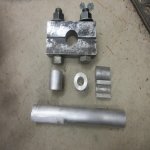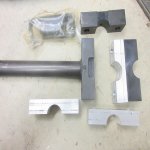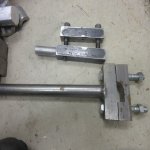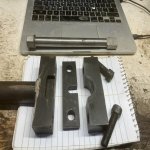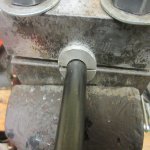- Location
- WMU248 near Edmonton
so here is another one I built recently... Enfield receiver wrench
I had a deactivated receiver with a barrel stub that I thought would work fine as a test subject
now I have not built the barrel vise and just used a pipewrench with a cheater (6' pipe) as the stub is not really useful for much but it came off and the receiver was not damaged or marked
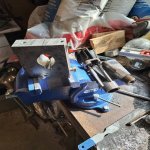
I had a deactivated receiver with a barrel stub that I thought would work fine as a test subject
now I have not built the barrel vise and just used a pipewrench with a cheater (6' pipe) as the stub is not really useful for much but it came off and the receiver was not damaged or marked

















































